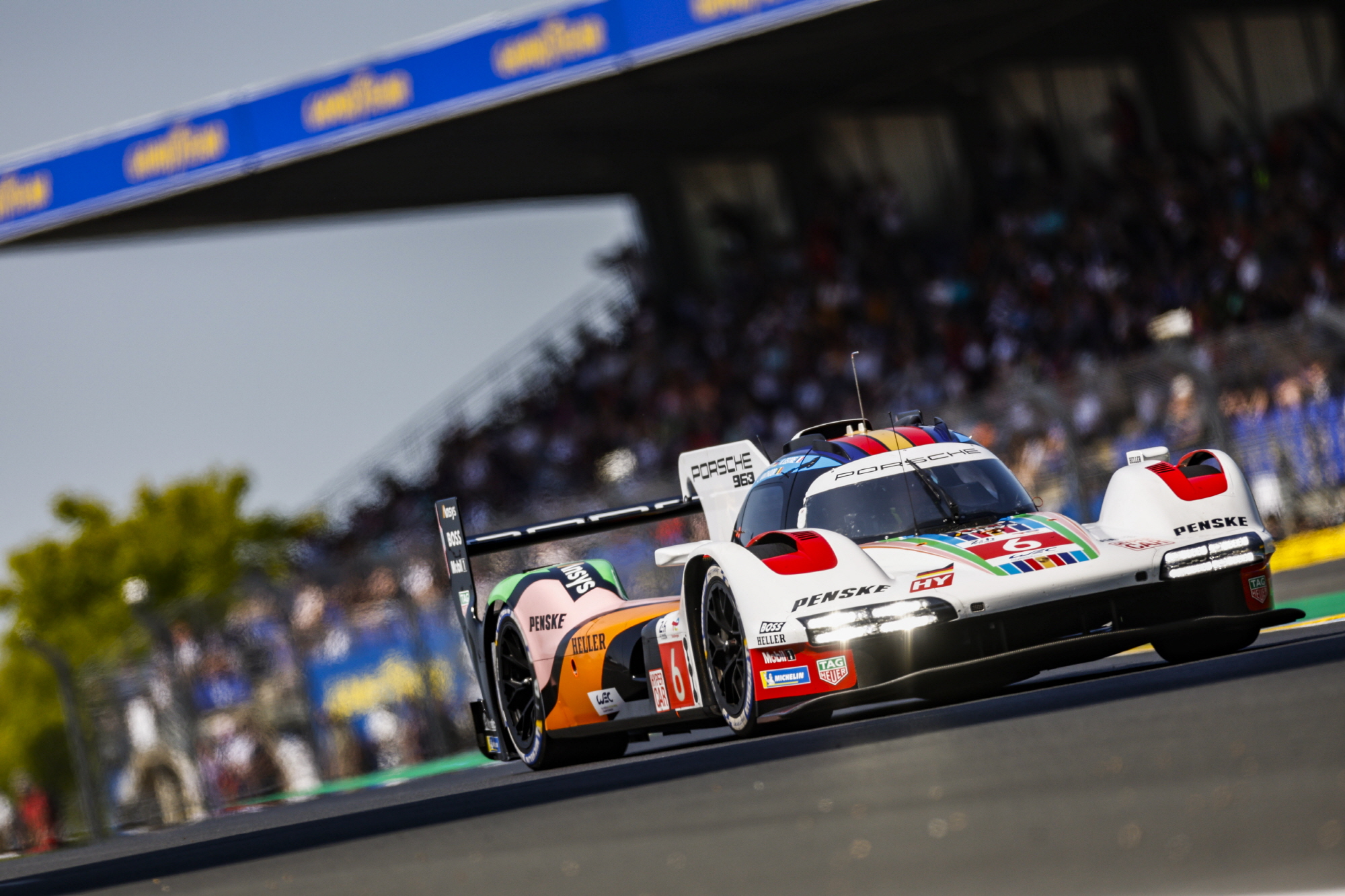
Porsche is showcasing a spectacular livery on the 963 vehicle to commemorate the 24 Hours of Le Mans. This celebration serves as a homage to historically significant motor racing colors and marks the 75th anniversary of Porsche sports cars, as well as the 100th anniversary of the venerable 24 Hours of Le Mans in France.
Colors of sponsors such as Martini, Rosman, and Gulf, along with iconic designs like “Pig” and “Hippie,” have been reimagined through the red color of the Porsche Salzburg team. These cars are set to participate in the world’s greatest and most historic endurance race.
Porsche AG announced that it will reveal special liveries on three Porsche 963 vehicles to celebrate this year’s 24 Hours of Le Mans.
The three Porsche 963 cars participating in this year’s Le Mans hypercar class feature a unique stripe pattern in seven colors — yellow, red, dark blue, light blue, green, pink, and orange — paying tribute to legendary Porsche racing cars from history. With 19 overall wins and 110 class wins, Porsche is recognized as a successful brand in the world’s most prestigious endurance race, which celebrates its 100th anniversary this year.
The orange stripe pattern of the Porsche 963 is inspired by the legendary Gulf design of the Porsche 917. In 1969, engineer John Wyer’s team, based in the UK, won and then switched to a 917 model in 1970, bringing in an oil company as a sponsor.
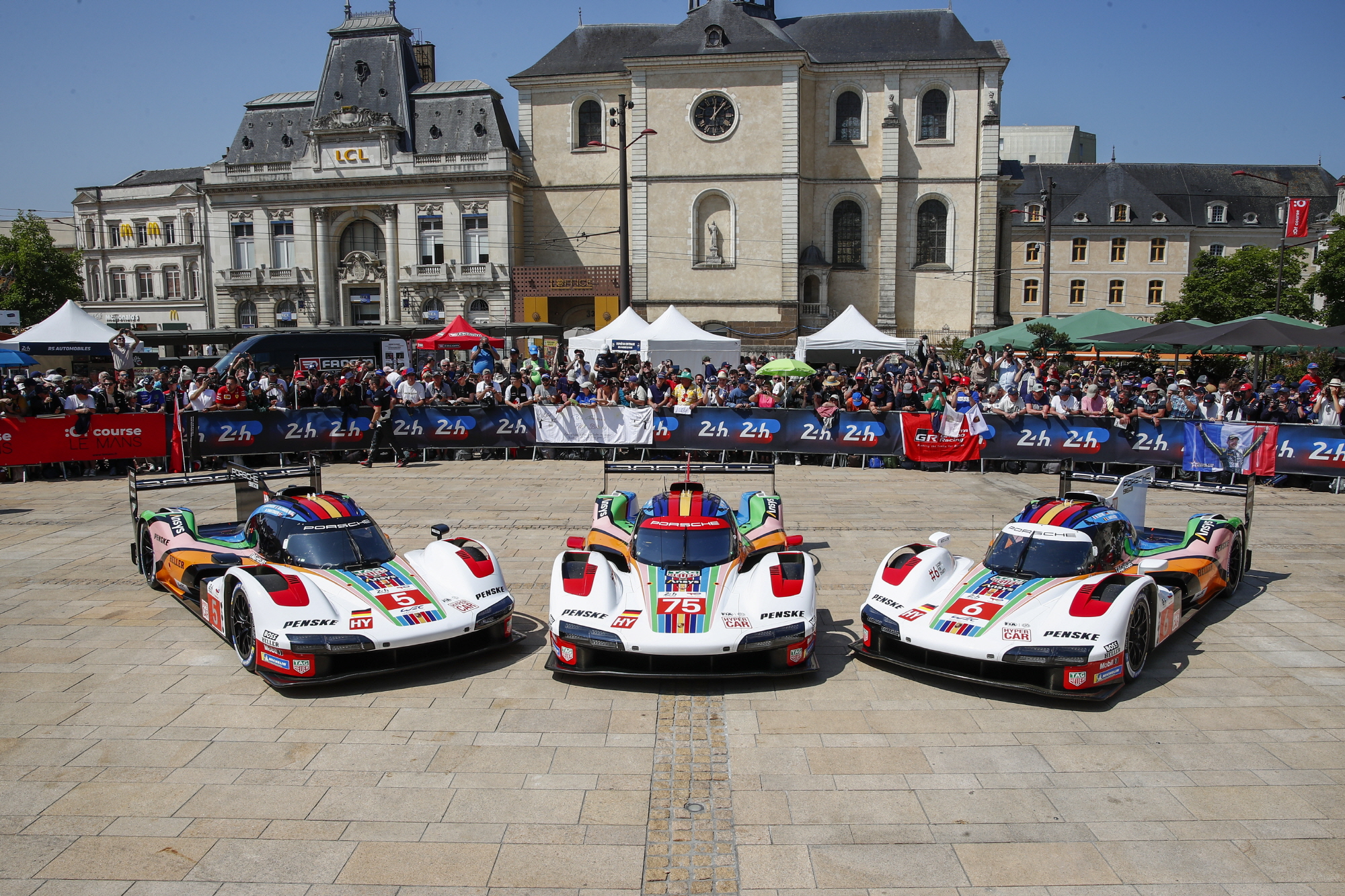
Earlier that year, all three cars had retired, but the public’s fascination with Gulf Porsche remained strong. The scene of American Hollywood star Steve McQueen driving a blue and orange racing car as the protagonist Michael Delaney in the movie ‘Le Mans’ is still regarded as one of the finest depictions of motor racing.
Before the dazzling rivalry between Porsche and Ferrari graced the screen in October 1971, Gulf Porsche made a podium appearance at Le Mans. British driver Richard Attwood and Switzerland’s Herbert Müller finished second overall with the 917 KH, powered by a 4.9-liter 12-cylinder engine. Nearly 50 years later, the Gulf design is applied to several Porsche 911 RSRs that participated in the FIA World Endurance Championship and the 24-hour race at Spa-Francorchamps.
In 1971, the Porsche 917/20 delighted fans, drivers, and attendees at Le Mans. Porsche designer Anatole Lapin sketched pieces of butchered pork on a pink background and labeled them according to sections like nose, thigh, ankle, and brain. Affectionate nicknames also emerged.
The vehicle, driven by Willy Kauhsen and Reinhold Joest, was eventually known in German-speaking regions as “Sau” and in English-speaking regions as “Pink Pig.”
In 1971, the performance of the 917/20 left much to be desired. Kauhsen and Joest retired just before the finish of the Le Mans 24-hour race while running in fifth place. However, the situation improved in 2018 when the “Pink Pig” design was revived. The Porsche 911 RSR adorned with the “Pink Pig” livery won the GTE class at the 24 Hours of Le Mans held at Le Sarthe Circuit, driven by works drivers Kevin Estre, Michael Christensen, and Laurence Vanthoor.
In April 1969, Anatole Lapin was appointed as Porsche’s new chief designer. The Latvian-born Lapin demonstrated an artistic sense in motorsport through the long-tail Porsche 917 driven by Gérard Larrousse and Willy Kauhsen in just a year. The psychedelic effect was created with green and purple wave patterns applied to the “Hippie” car using approximately 1,500 spray cans.
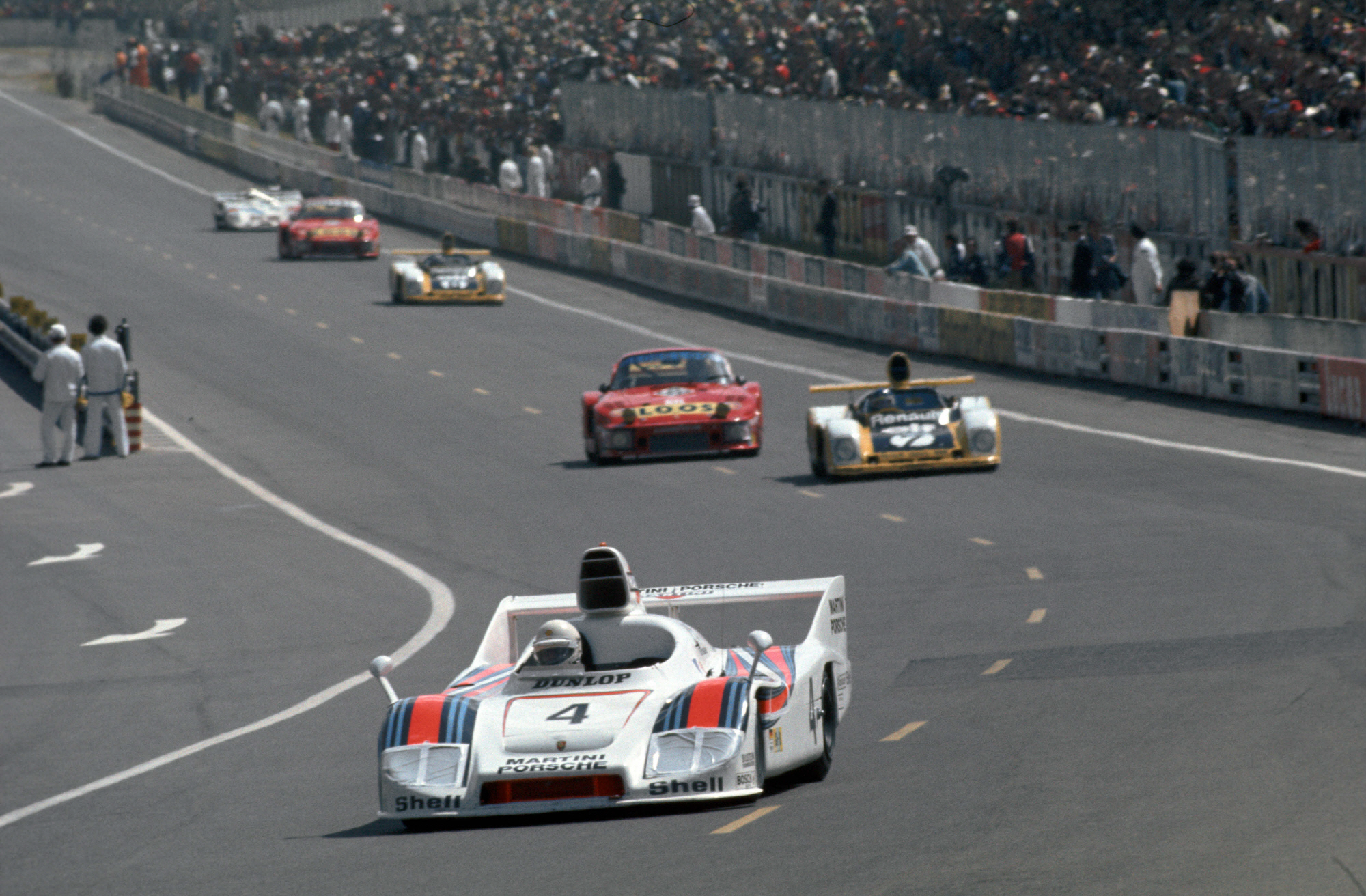
Some executives were skeptical about the design, but team owner Hans-Dieter Dechent and representatives from the Martini & Rossi sponsor praised it. The speedy “Hippie” left a strong impression on motor racing. In 1970, Hans Hermann and Richard Attwood achieved the first overall win for Porsche at Le Mans, and Larrousse and Kauhsen took second place.
In 1970, Hans-Dieter Dechent first entered a team at Le Mans in collaboration with the Italian liquor brand Martini. Following the victory of Porsche Salzburg, Larrousse and Kauhsen’s “Hippie” 917 took second place, while Lins and Marko’s 908 came in third, dominating the podium for Porsche.
Change took place the following year. Helmut Marko from Austria and Heijs van Lennap from the Netherlands won with the Porsche 917 KH, which entered as a Martini racing team. The two set an unimaginable record of 5,335 kilometers at the time, which lasted for 39 years. The attention-grabbing white livery with light blue, red, and dark blue stripes remains cult popular today.
This livery was also reflected on the Porsche 936 driven by Jacky Ickx and Heijs van Lennap, who won overall at Le Mans in 1976. The following year, Jürgen Barth, Hurley Haywood, and Jacky Ickx claimed their third victory with the Martini-colored Porsche 936/77.
The Rosman design, featuring dark blue and white with red and gold accents, is connected to Porsche’s consecutive victories. The works team, partnering with a Canadian tobacco group, garnered significant attention with their debut entry. In the 1982 24 Hours of Le Mans, three Porsche 956s swept the top three positions, finishing 30 laps ahead of the fourth place. The following year, they also claimed the first and second positions simultaneously, proving their unmatched prowess in the Sports Car World Championship at the time.
The Porsche 962C, designed with the 956 livery, crossed the finish line first at the world’s most famous endurance classic in 1986 and 1987. About 30 years later, Porsche revived this legendary paint design at Le Mans. In 2018, the Porsche 911 RSR adorned with the Rosman design set a qualifying record for GTE cars and finished second, following the 911 RSR decorated with the “Pink Pig” livery in the same class.
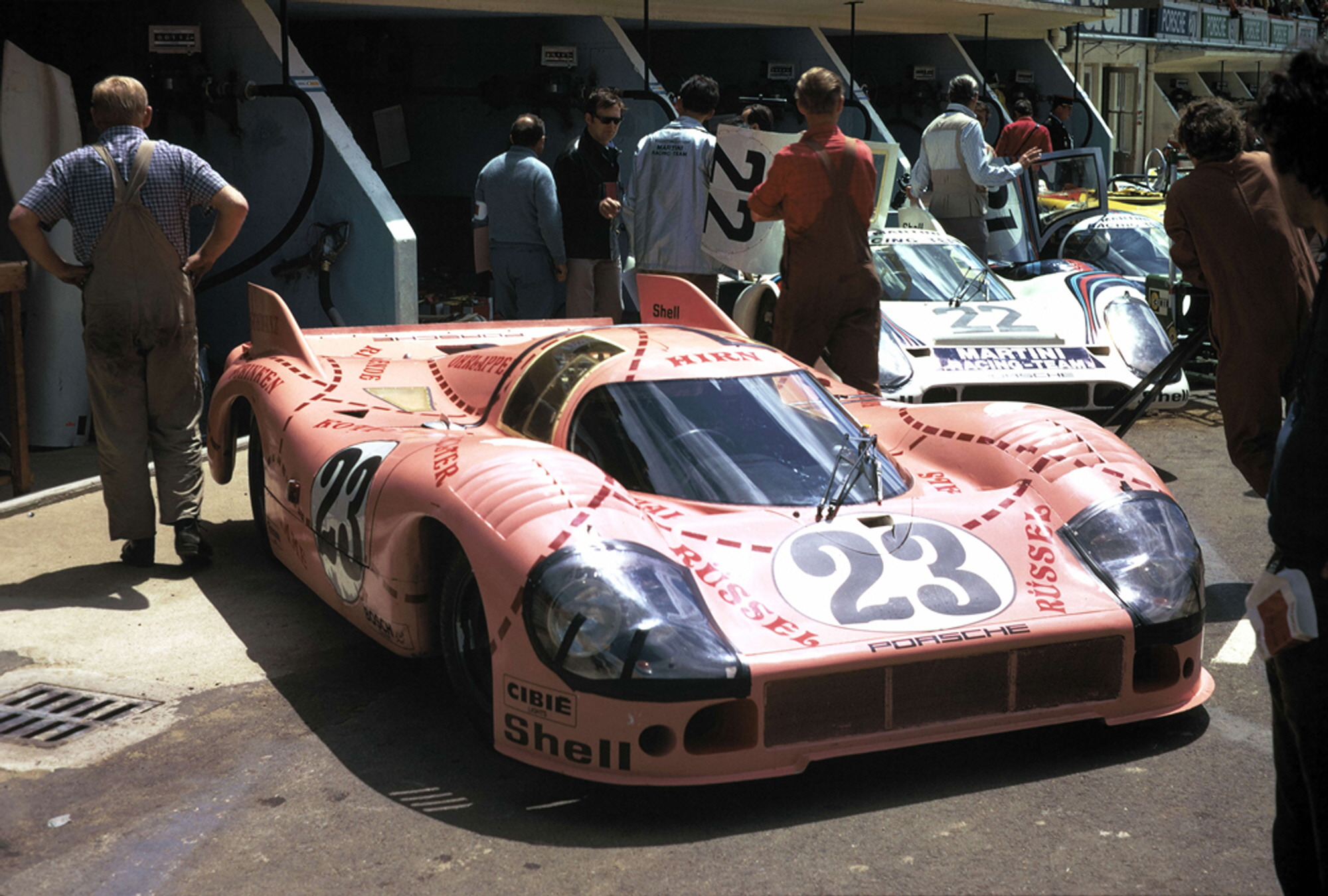
Porsche intensified its efforts in the 1970 season after narrowly missing the first overall win with the 908 LH by just 120 meters in the 1969 season. Competing with registered vehicles from Porsche Salzburg and John Wyer’s new works team vehicles, Porsche achieved great success in red and white colors representing Austria.
On Saturday, June 13, 1970, while Ferry Porsche watched the race waving a green flag, his sister Louise Piëch managed the Salzburg team’s business. The race at the time abolished the classic start for the first time, and abrupt rain led to countless spins and slides. Ultimately, out of 57 vehicles that participated, only seven remained in the race, with the Porsche 917 KH No. 23 leading. British drivers Richard Attwood and Hans Hermann occupied the cockpit and led overwhelmingly by five laps, achieving Porsche’s first overall victory at Le Mans.
The yellow stripe with a red border in the center was inspired by Porsche and Penske team’s previous victories. In the early 1970s, Porsche won two titles with the American Penske team in the Can-Am series.
The performance of the Porsche RS Spider, featuring the yellow and red of main sponsor DHL in the American Le Mans Series (ALMS), is even more impressive. The LMP2 prototype race car dominated with 24 victories from 2006 to 2008, including an overall win against more powerful LMP1 vehicles by Timo Bernhard from Germany, Romain Dumas from France, and Emmanuel Collard in the 2008 Sebring 12-hour race. At Le Mans, the RS Spyder won twice in the LMP2 class in 2008 and 2009, despite the absence of the Penske team.
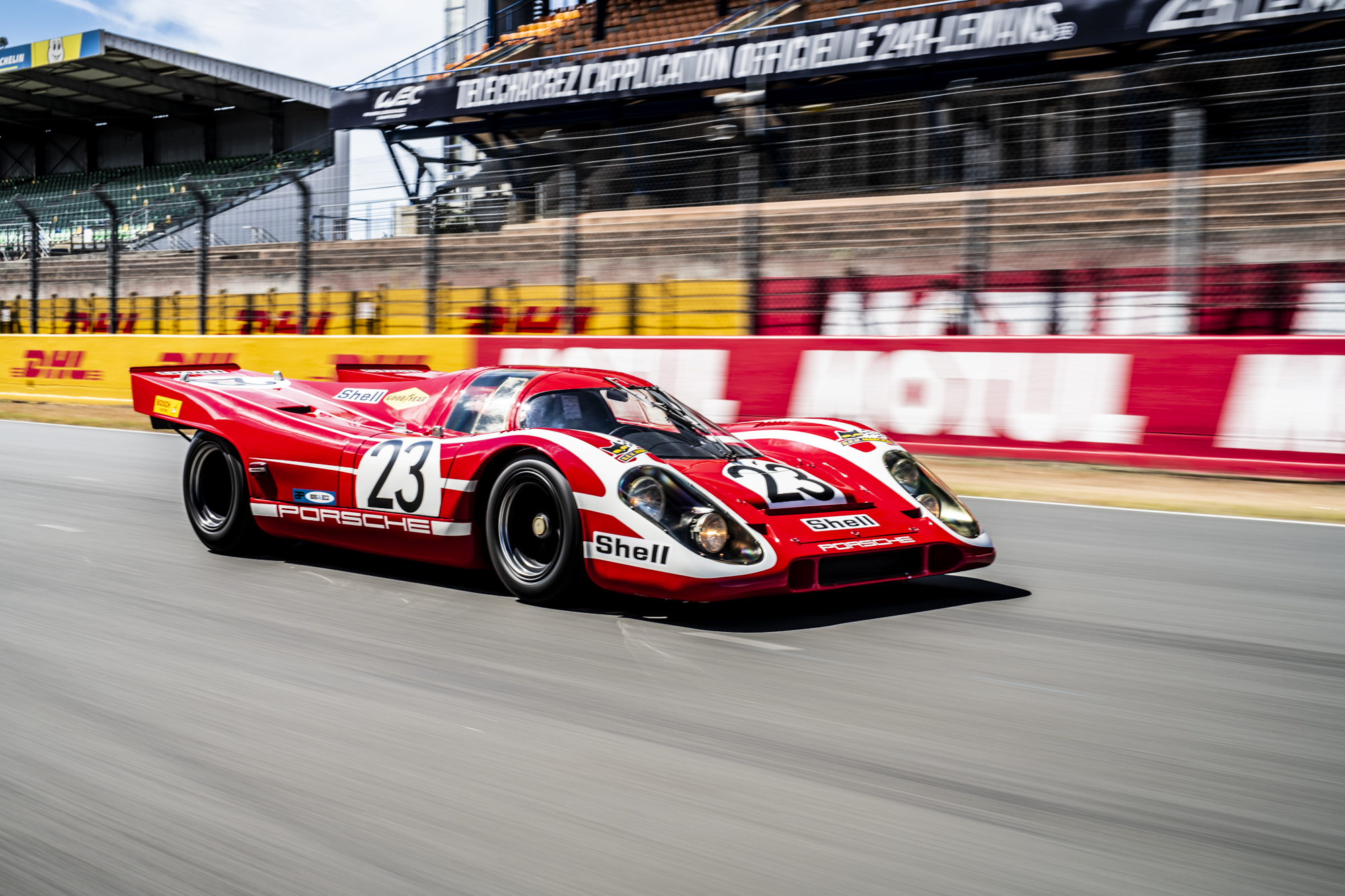
Lee Sang-jin daedusj@autodiary.kr

